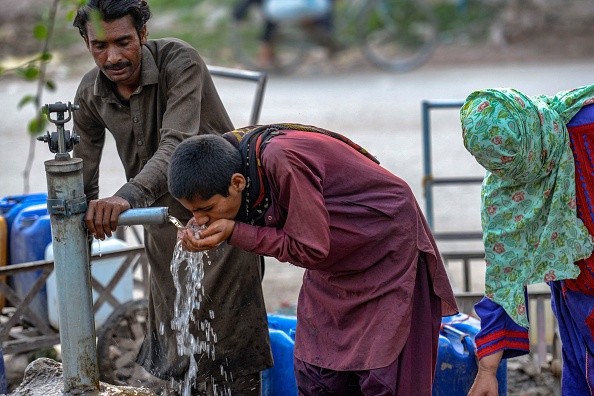From the Murray-Darling system to the Great Artesian Basin, "invisible" underground groundwater is frequently the only water source accessible throughout a large portion of Australia, contributing more than $6.8 billion to the GDP each year.
Misuse of groundwater during droughts and aquifer depletion, on the other hand, has already resulted in water crises, most notably in Australia's "food bowl," the Murray-Darling Basin (MDB), California, and Cape Town in South Africa, with more expected to join as climate change accelerates and societies grow.
Why are all of these vital resources being misused and misinterpreted?

Worldwide, the need to regulate freshwater resources is growing by the day, with the United Nations issuing a grave caution for wide swaths of the heavily populated, and if more groundwater regulations are not installed in other dry and semi-arid countries throughout the world.
Under a marketing scenario, the globe will face a 40% water shortage by 2030, according to a 2009 World Resources Group analysis, as per ScienceDaily.
Groundwater accounts for nearly all of the freshwater resources on our planet.
"97% of fresh water on earth lies beneath our feet," said Craig Simmons, a Flinders University Distinguished Professor of Hydrogeology and a lead significant contribution to the UN World Water Development Report 2022, which was published on World Water Day.
Professor Simmons argued that examples of business companies, such as irrigators engaging with local residents on aquifer protection and conservation are necessary to preserve critical groundwater aquifers.
According to Professor Simmons, the Angas Bremer irrigation region in South Australia, Australia's driest state, is a unique and effective local coordinated action that gives principles for future planning and prospective government changes.
Protecting groundwater around the world
Enhancing sanitary maintenance may have a significant influence on drinking-water quality both from the ground and susceptible groundwater supplies, especially when wastewater pollute drinking-water resources.
Development on properly monitored sanitation has to be accelerated at least four times (many times higher in some locations), with a greater emphasis on the influence on underground water, as per the World Health Organization.
Sanitation safety planning, a risk-based approach for sewage systems to evaluate, prioritize, and maintain health hazards along the whole sanitary chain, is suggested in the WHO's Guidelines on Sanitation and Health.
The Angas Bremer region, located at the bottom of the basin, has no say over groundwater recharge choices, although it has been working on co-management plans for more than 50 years.
Professor Simmons' new research article, "Coming Together: Insights from an Australian Example of Collective Action to Co-Manage Groundwater," examined the collective domestic economic, social, and ecologic choices that have helped build a useful example of watershed management for others across the world.
The local advisory board established and implemented new river management strategies in collaboration with the government organization, resulting in an 80% reduction in subsurface water extractions and supported artificial recharge from extra surface and groundwater, changing crops for increased profitability, decreasing water consumption levels, and designing pipelines obtaining surface-water sources, the study concluded.
Improving sanitation of groundwater
Strong state leadership and investment in robust drinking water and sanitation systems will also aid in groundwater protection.
The WHO and UNICEF State of the Country's Sanitation report laid out an aspirational plan for achieving universal access to adequate sanitation, including case studies, and emphasizes obstacles, accomplishments, and practice guidelines.
The WHO, UNICEF, and the World Bank will release a companion report on drinking water later this year.
Currently, 2.2 billion people have inadequate clean water to drink, and half of the country's population will live in water-stressed areas by 2025.
Related article: Groundwater Extraction Triggered Earthquake in Spain
© 2025 NatureWorldNews.com All rights reserved. Do not reproduce without permission.





